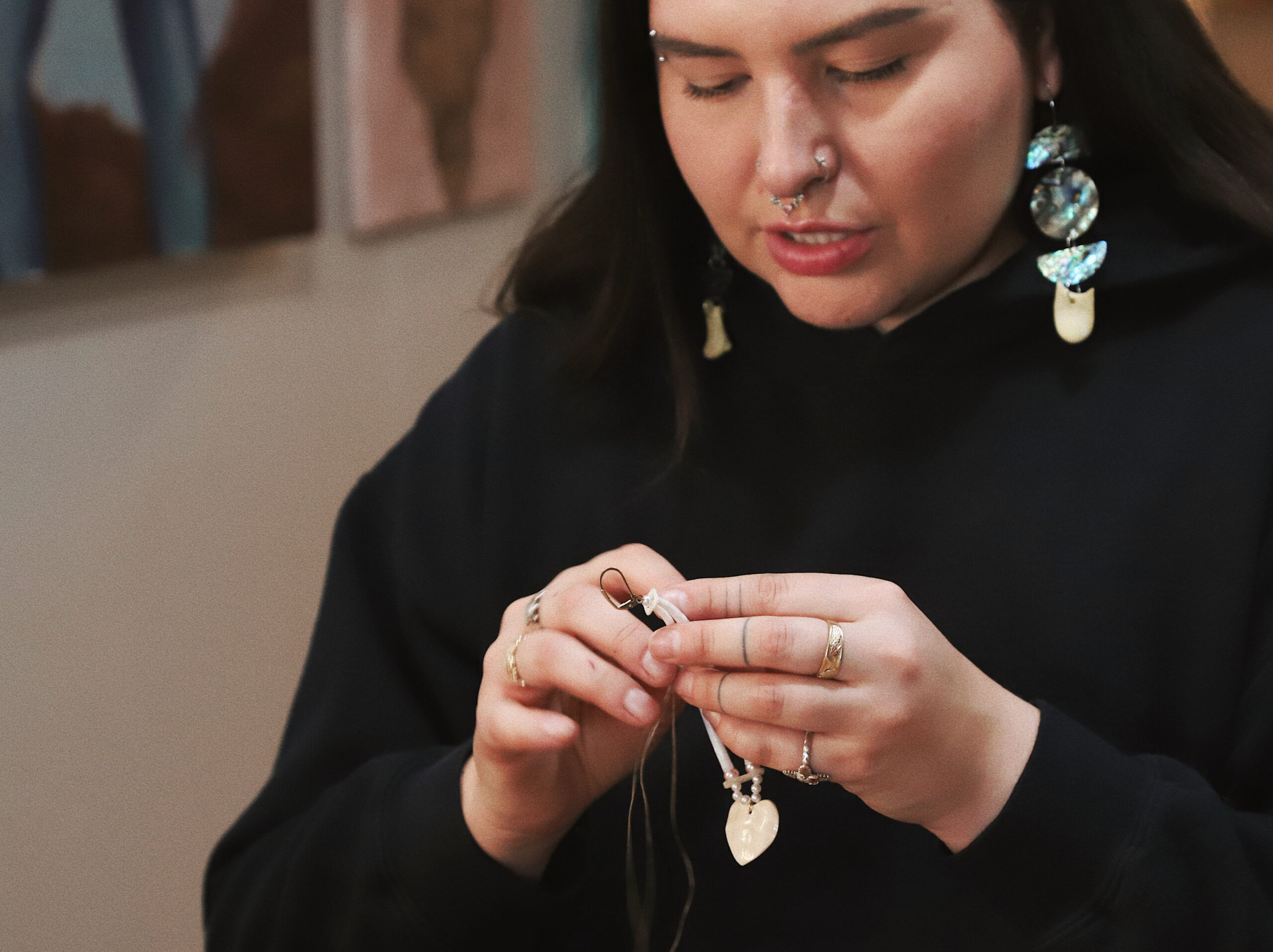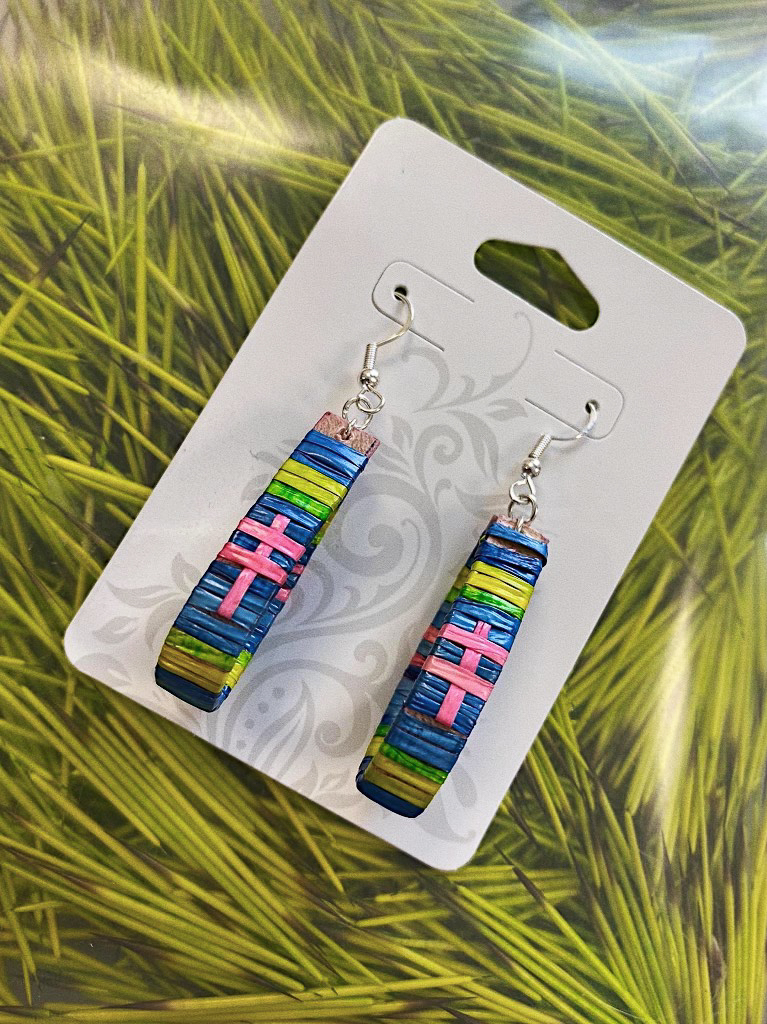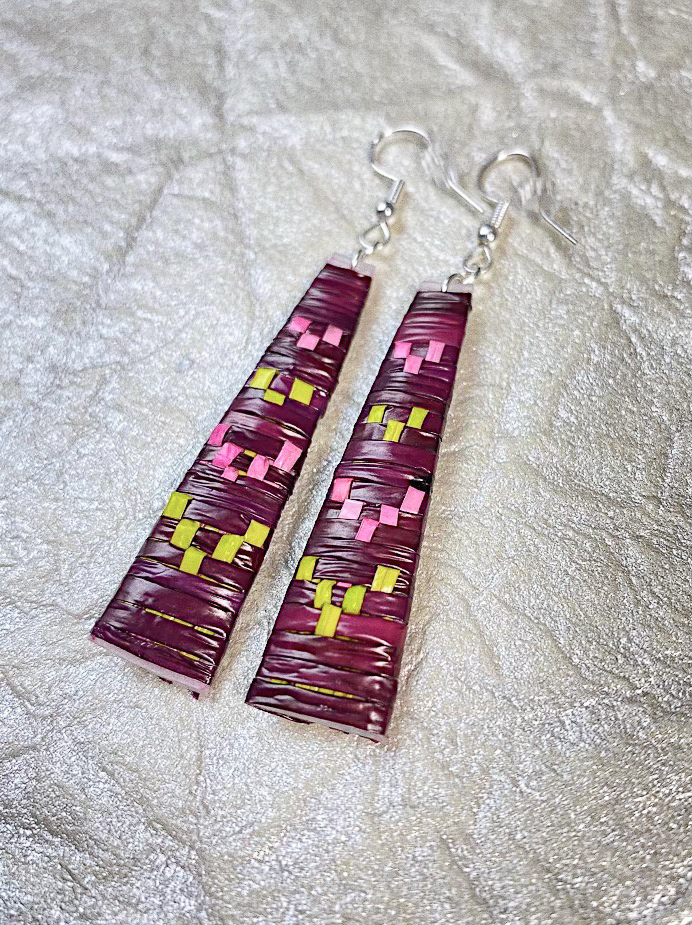Art, in its many forms, serves as a powerful expression of human creativity, emotion, and connection to the world around us. For many, inspiration stems from diverse sources. For Casandra Artichoker, a Siċaƞġu Lak̇ot̄a and Ho-Chunk artist living on the Rosebud Reservation, it is rooted in nature, the night sky, and the landscape of her dreams. Artichoker pays homage to her Lak̇ot̄a roots and Lakol Wicohan-Lakota way of life, but breathes contemporary life into traditional art forms, challenging the misconception that these practices are fading away and making the statement that “we are still here.”
Family plays a pivotal role in Artichoker’s story, with her Ina (mother) being the first teacher who taught her the skill of beading. She incorporates designs inspired by Lak̇ot̄a, Dak̇ot̄a, and Ho-Chunk symbolism into her creations, establishing a strong link between her and her ancestors. “I was 10 when I started beading, it started with my mom teaching me how to loom, peyote stitch, and the single thread loop dangle earrings. I still have the first pair I made!” says Artichoker, who was gifted a beading kit when she was 12 and then taught herself how to bead earrings with a post.
CASANDRA ARTICHOKER“I think I’ve always disliked and disagreed when people would say quill work is a dying art or the Lak̇ot̄a language is a dying language. Maybe it looks a bit different now but there are a lot of us in this generation who are fighting to keep them alive.”

In the last year, at 27, she learned quilling, another traditional art form, from the esteemed Lak̇ot̄a artist Ivan Knife, demonstrating the importance of mentorship and passing down knowledge within the community.
Quillwork, a traditional art practice of the Lak̇ot̄a people, has seen a resurgence in its practitioners in recent years, a testament to the resilience of Lak̇ot̄a people. Decline in those who practice traditional art has been a concern for many years, but a new generation of young Lak̇ot̄a artists are emerging, fiercely dedicated to learning and preserving these practices, including Artichoker.
“I think I’ve always disliked and disagreed when people would say quill work is a dying art or the Lak̇ot̄a language is a dying language. Maybe it looks a bit different now but there are a lot of us in this generation who are fighting to keep them alive,” she says.
In the eyes of Artichoker, the intertwining of art, spirituality, and culture creates an inseparable bond. “Doing traditional artwork fills me with so much pride and belonging whether it’s making earrings or learning new things…I’m so hungry right now in my life for knowledge and to use what I learn to tell important and impactful stories through my art,” she adds.




A poignant example of this dedication is when Artichoker and her partner, Sunni One Star came across a ṗahiƞ (porcupine) that had made its journey. Just a month before, they had sat in a workshop with Ivan Knife and learned the beginning basics of quillwork. They had spoke about how they look forward to the day they can learn how to process the quills from a ṗahiƞ, and just as fate would have it, they crossed paths with one. They laid down a tobacco offering and carefully brought the ṗahiƞ home to process. After processing, they buried the ṗahiƞ and offered a prayer for a good journey. This process became a bridge connecting past and present, a link between generations separated by time but united in spirit. The ṗahiƞ lives on through the art that will be created with its quills and its long hairs will be saved to create a ṗeṡa (headroach), and in that way the memory and spirit of the animal lives on, giving strength and wisdom to those who grace its presence.
“I have so much love and respect for being Lak̇ot̄a and our Lak̇ot̄a way of life, so why wouldn’t I want to learn these practices and be able to carry them on through me and my children/nieces and nephews and grandchildren. It’s up to us!” says Artichoker. “It also makes me feel closer to the ancestors, too. I feel so cool when I learn a new skill or do a good job on a project I’m working on, I think how they’d be so proud of me.”
Artichoker’s creative journey extends beyond a singular medium, embracing painting, beading, sewing, dentalium work, along with quilling. As this artist continues to explore and expand their creative horizons, they embody the spirit of cultural reclamation. Each piece created, whether inspired by dreams, nature, or traditional symbols, contributes to the story of resilience and the enduring spirit of the Lak̇ot̄a people.

To other young Lak̇ot̄a artists, she says, “If you feel inspired to create; create! No matter if it’s your first project, tenth, or hundredth…you are an artist. Don’t get discouraged because you don’t know how to do something right away, we all started not so good at what we do. There’s space for all of us in the Native art world.”
Through her journey, Artichoker hopes to inspire others to reclaim and revitalize their traditional art practices and culture, proving that these art forms are not relics of the past but vibrant expressions of a living culture and people.
